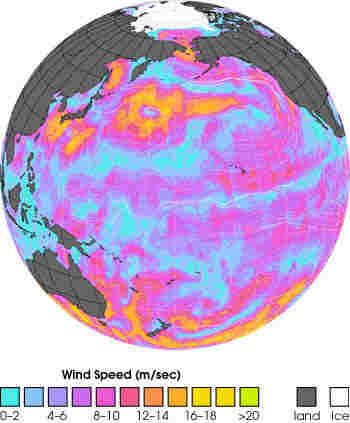|
Regardless of what they are called, these storms
have several features in common. They are large, up to 960 kilometers
(600 miles) in diameter. They have strong winds, blowing at speeds up to
320 kilometers (200 miles) per hour. These winds blow in what is called
a cyclonic circulation pattern. This means that the wind blows along a
curved path that spirals inward toward the center of the storm. The
pattern of winds defines the cloudy arms of a hurricane, which are
easily visible on satellite photographs. The winds blow inward because
the center of the hurricane is a zone of low pressure called the eye. In
contrast to the raging winds and heavy rain around it, the eye is an
area of clear skies and fairly calm winds.
|

Typhoon in the North Pacific
|